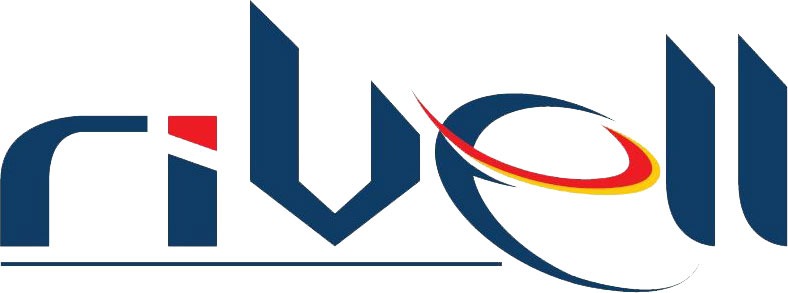Definition of Disaster Recovery plan
A Disaster Recovery Plan (DRP) is a structured and systematic approach that outlines the processes, policies, and procedures an organization must follow to recover and resume normal operations in the aftermath of a disruptive event. This plan is a crucial component of an organization’s overall business continuity strategy, designed to mitigate the impact of disasters and ensure the swift recovery of critical business functions.
According to the latest 2022 MSP Threat Report by ConnectWise, two out of three midsize businesses have suffered a ransomware attack in the last 18 months.
Think of it as a detailed playbook outlining the steps to take before, during, and after a disruptive event, such as:
- Technological failures: hardware outages, data breaches, cyberattacks, etc.
- Human errors: accidental data deletion, configuration mistakes, etc.
Key Components of a Disaster Recovery Plan (DRP)
1. Risk Assessment and Business Impact Analysis (BIA)
- Identifying potential risks and threats to the organization.
- Conducting a detailed analysis of the impact of disruptions on various business functions.
2. Data Backup and Recovery
- Implementing regular and secure backup procedures for critical data.
- Establishing mechanisms for efficient data recovery to minimize data loss.
3. Communication Protocols
- Defining clear lines of communication within the organization during and after a disaster.
- Establishing external communication channels to keep stakeholders, customers, and the public informed.
4. Employee Roles and Responsibilities
- Clearly outlining the roles and responsibilities of employees during a disaster.
- Providing training to ensure staff is well-prepared to execute their assigned tasks.
5. Equipment and Facility Considerations
- Assessing the physical infrastructure and ensuring it can withstand potential disasters.
- Identifying alternative facilities and equipment to maintain operations if primary resources are compromised.
6. Testing and Training
- Conducting regular drills and simulations to test the effectiveness of the DRP.
- Providing ongoing training to ensure that employees are familiar with the plan and can respond effectively in a crisis.
7. Flexibility and Continuous Improvement
- Recognizing that the business environment and potential risks are dynamic.
- Regularly reviewing and updating the DRP to ensure its relevance and effectiveness.
8. Documentation and Compliance
- Maintaining thorough documentation of the DRP, including all procedures and protocols.
- Ensuring compliance with industry regulations and standards related to disaster recovery.
9. Budgeting and Resource Allocation
- Allocating necessary resources, including budget and personnel, to support the implementation of the DRP.
- Prioritizing investments in technologies and solutions that enhance disaster resilience.
10. External Partnerships and Services
- Establishing relationships with external service providers for additional support during disaster recovery.
- Collaborating with relevant authorities and organizations for mutual assistance in times of crisis.
Disaster Recovery Plans for Small Businesses
A Disaster Recovery Plan is your roadmap to getting back on your feet quickly and efficiently after a disaster, whether it’s a natural event, a cyberattack, or even a simple power outage. It outlines the steps you need to take to protect your critical data, restore operations, and minimize downtime.
Importance of Disaster Recovery Plan for Small Businesses
1. Mitigating Downtime and Financial Loss
1.1 Swift Recovery of Operations
- DRPs enable small businesses to recover essential operations quickly, minimizing downtime and reducing the financial impact of disruptions.
1.2 Cost-Efficient Strategies
- Proactive planning through DRPs allows for the implementation of cost-efficient strategies to address potential risks, ensuring that limited resources are utilized effectively.
2. Protecting Critical Data and Assets
2.1 Preserving Business Continuity
- DRPs prioritize the safeguarding of critical data, preserving business continuity by minimizing data loss and ensuring the integrity of essential information.
2.2 Defending Against Cyber Threats
- In an era where cyber threats pose a significant risk, DRPs include measures to defend against data breaches, ransomware attacks, and other cybersecurity challenges.
3. Ensuring Employee Safety and Well-Being
3.1 Clear Communication Protocols
- DRPs establish clear communication protocols, ensuring that employees are informed and safe during and after a disaster.
3.2 Employee Training and Preparedness
- Small businesses can enhance employee safety through training programs that prepare staff to respond effectively to emergencies, creating a culture of preparedness.
4. Enhancing Reputation and Customer Trust
4.1 Transparent Communication
- A well-executed DRP includes transparent communication with customers, suppliers, and stakeholders, thereby enhancing trust and maintaining the business’s reputation.
4.2 Demonstrating Reliability
- Small businesses that demonstrate reliability in the face of challenges build trust with customers, fostering loyalty and long-term relationships.
5. Compliance with Regulatory Standards
5.1 Meeting Industry Regulations
- DRPs ensure that small businesses comply with industry regulations and standards, mitigating legal risks and potential liabilities.
5.2 Adapting to Regulatory Changes
- As regulatory landscapes evolve, DRPs can be adapted to accommodate changes, ensuring ongoing compliance and minimizing the risk of penalties.
6. Facilitating Growth and Innovation
6.1 A Foundation for Growth
- With the assurance of a robust DRP, small businesses can confidently pursue growth opportunities, knowing that they have a safety net in place.
6.2 Embracing Innovation
- DRPs foster an environment where innovation is encouraged, as the fear of potential disruptions is mitigated, allowing small businesses to explore new technologies and strategies.
Disaster Recovery Plan Checklist for small businesses
Creating a checklist for a Small Business Disaster Recovery Plan (DRP) is a smart way to ensure that all essential components are considered and addressed. Here’s a comprehensive checklist to guide you in developing and implementing an effective DRP for your small business:
1. Risk Assessment and Business Impact Analysis (BIA)
- Identify potential risks and threats to your business.
- Conduct a detailed Business Impact Analysis to understand the impact of disruptions on various business functions.
2. Data Backup and Recovery
- Implement regular and secure backup procedures for critical data.
- Ensure data recovery mechanisms are in place to minimize data loss.
3. Communication Protocols
- Define clear lines of communication within the organization during and after a disaster.
- Establish external communication channels to keep stakeholders, customers, and the public informed.
4. Employee Roles and Responsibilities
- Clearly outline the roles and responsibilities of employees during a disaster.
- Provide training to ensure staff is well-prepared to execute their assigned tasks.
5. Equipment and Facility Considerations
- Assess the physical infrastructure and ensure it can withstand potential disasters.
- Identify alternative facilities and equipment to maintain operations if primary resources are compromised.
6. Testing and Training
- Conduct regular drills and simulations to test the effectiveness of the DRP.
- Provide ongoing training to ensure that employees are familiar with the plan and can respond effectively in a crisis.
7. Flexibility and Continuous Improvement
- Recognize that the business environment and potential risks are dynamic.
- Regularly review and update the DRP to ensure its relevance and effectiveness.
8. Documentation and Compliance
- Maintain thorough documentation of the DRP, including all procedures and protocols.
- Ensure compliance with industry regulations and standards related to disaster recovery.
9. Budgeting and Resource Allocation
- Allocate necessary resources, including budget and personnel, to support the implementation of the DRP.
- Prioritize investments in technologies and solutions that enhance disaster resilience.
10. External Partnerships and Services
- Establish relationships with external service providers for additional support during disaster recovery.
- Collaborate with relevant authorities and organizations for mutual assistance in times of crisis.
11. Review Insurance Coverage
- Assess and update business insurance coverage to ensure it adequately addresses potential risks and losses.
12. Cybersecurity Measures
- Implement robust cybersecurity measures to protect against data breaches and cyber threats. – Regularly update and patch software to address vulnerabilities.
13. Emergency Evacuation Plans
- Develop and communicate clear evacuation plans for employees in the case of physical disasters.
14. Access Control and Authentication
- Implement access controls and authentication measures to secure sensitive data and systems.
15. Crisis Communication Plan
- Develop a comprehensive crisis communication plan, including key messages and spokesperson responsibilities.
16. Vendor and Supply Chain Considerations
- Assess the vulnerability of vendors and supply chains to disruptions and have contingency plans in place.
17. Employee Contact Information
- Maintain up-to-date contact information for all employees to facilitate communication during and after a disaster.
18. Legal and Regulatory Compliance
- Stay informed about legal and regulatory requirements related to disaster recovery. – Ensure that the DRP aligns with these requirements.
19. Social Media Monitoring
- Implement tools and processes for monitoring social media during and after a disaster to address public relations issues.
20. Post-Disaster Assessment
- Establish procedures for assessing the impact of a disaster and identifying areas for improvement in the DRP.
FAQs – Disaster Recovery Plan for Small Businesses
Q1: What is a Disaster Recovery Plan (DRP)?
A Disaster Recovery Plan (DRP) is a comprehensive strategy outlining the processes and procedures a business follows to recover and resume normal operations after a disruptive event, such as a natural disaster, cyberattack, or other emergencies.
Q2: Why is a Disaster Recovery Plan important for small businesses?
Small businesses are often more vulnerable to disruptions. A DRP is crucial for mitigating downtime, protecting critical data, ensuring employee safety, and safeguarding the overall continuity of business operations.
Q3: What are the key components of a small business DRP?
Key components include risk assessment, data backup and recovery, communication protocols, employee roles, equipment considerations, testing and training, flexibility, documentation, budgeting, external partnerships, and compliance.
Q4: How often should a small business DRP be updated?
A small business DRP should be reviewed and updated regularly, at least annually, or whenever there are significant changes in the business environment, infrastructure, or potential risks.
Q5: Can the RIVELL help small businesses plan for the future in their DRPs?
Absolutely. The Long-term Sustainability component of Rivell encourages businesses to consider the evolving nature of risks, technologies, and business operations. By planning for the long term, small businesses ensure that their DRP remains effective and future-ready. Call us at (856) 603 0000.
Conclusion
A well-developed DRP is essential for organizations of all sizes and industries, as it helps minimize downtime, protects critical data and assets, and ensures the safety of employees during and after a disaster. It is a proactive strategy that enables businesses to navigate and recover from disruptions, fostering resilience in the face of unforeseen challenges.
Reach out to Rivell today to craft a customized disaster recovery plan that aligns with the unique needs of your small business in New Jersey. Whether you are facing data breaches, natural disasters, or other unforeseen challenges, our disaster recovery solutions for small businesses in NJ are designed to ensure the resilience and continuity of your operations. Call us at (856) 603 0000 or Submit a contact form to take the first step towards securing your business against potential disasters.











